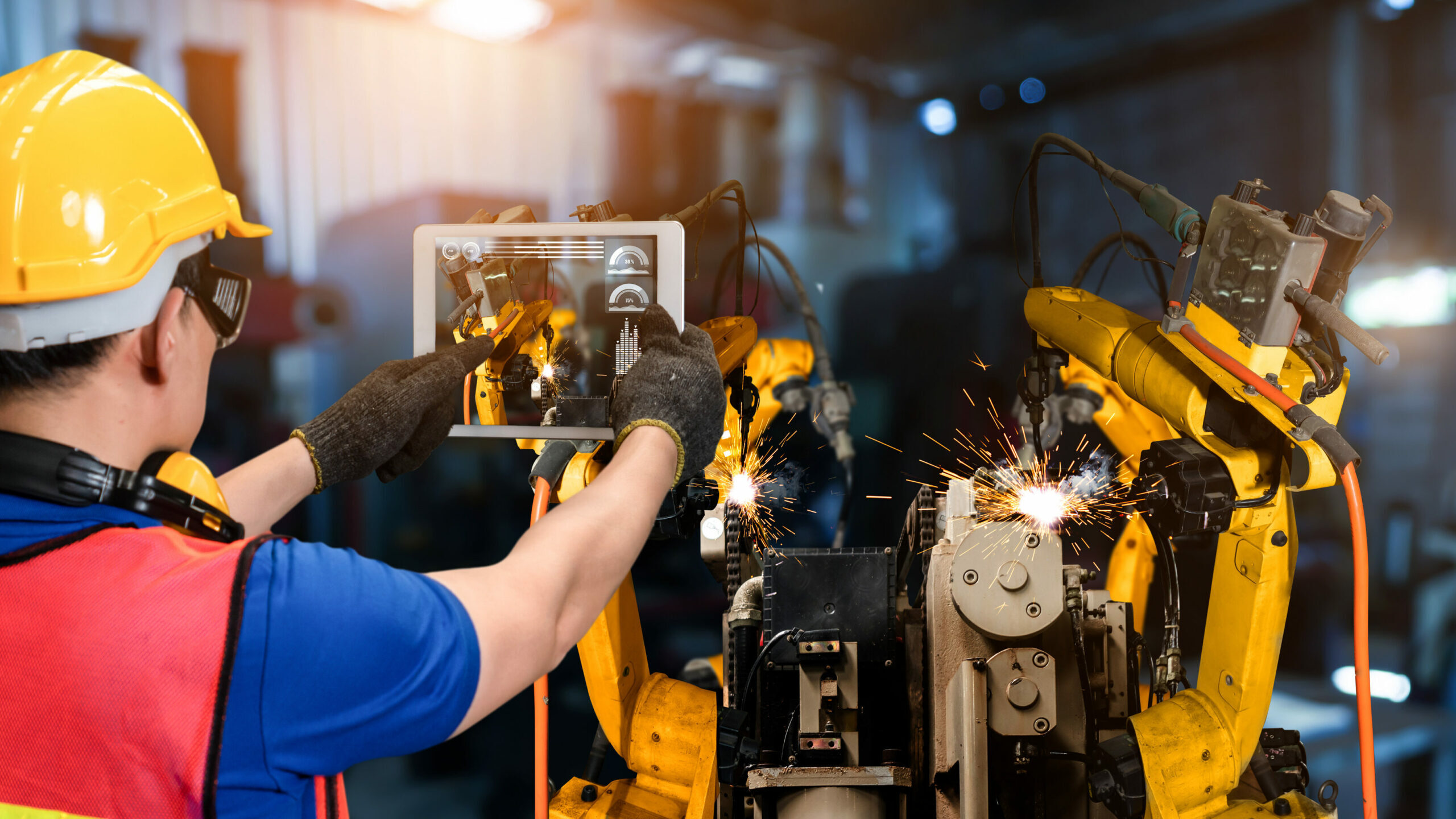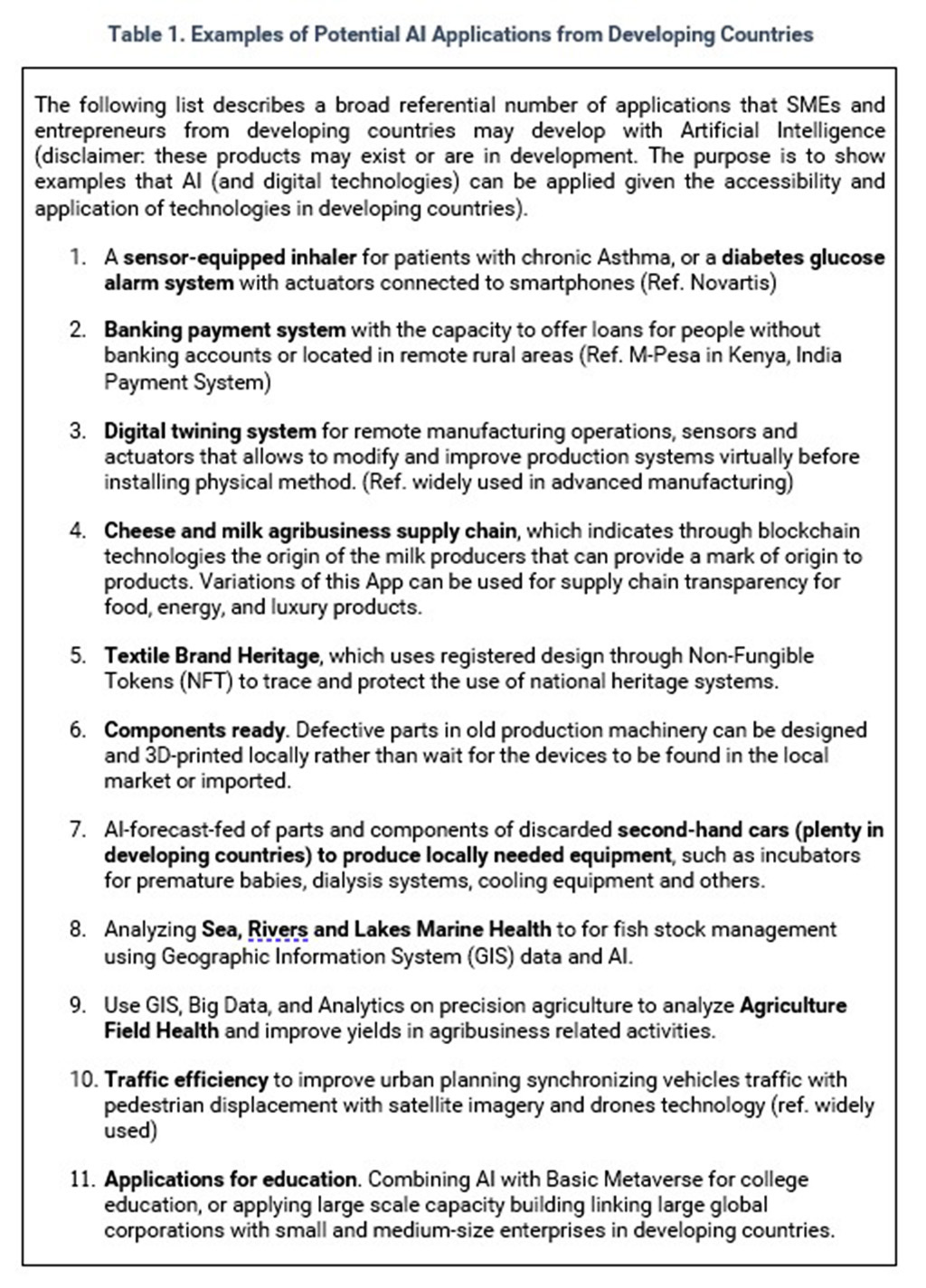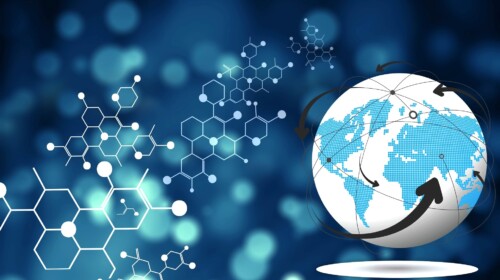Artificial Intelligence is essential for productive transformation in developing countries and it can contribute to jobs creation bringing prosperity to emerging economies if properly used.
Marco Kamiya, UNIDO, Chief of Digital Transformation and AI Strategies at UNIDO, the United Nations Industrial Development Organization
The American writer F. Scott Fitzgerald said that the test of first-rate intelligence is the ability to hold two opposed ideas in mind at the same time and still retain the ability to function, and this line is relevant when we refer to Artificial Intelligence, as the debate is lopsided toward a negative narrative. A critical view prevails that focuses on the effects of AI on privacy, profiling, and disinformation, eroding human rights, and through replacement of labor will cause unemployment and inequality.
All sensible organizations -and the United Nations has a key role- must be aware of the potential ethical effects of technologies and possible misuse of AI[1]. But the cons must be balanced by the pros so that policymakers can act on an essential element: applying AI technologies to economic transformation. We think that AI is one of the critical technologies of the Fourth Industrial Revolution, and corporations and small and medium-size enterprises (SMEs) from emerging countries must advance in applying AI to productive activities.
To support SMEs and productive transformation in developing countries, we need to take into account the following: (i) the changing nature of productive activities beyond manufacturing; (ii) the exponential growth of digitalization and AI; and (iii) the practical uses and applications of AI for productive activities.

Smart industry robot arms for digital factory production technology showing automation manufacturing process of the Industry 4.0 or 4th industrial revolution and IOT software to control operation .
AI Beyond Manufacturing
Artificial Intelligence is the ability of a system, a computer, or a robot to learn, performing tasks usually done by humans with the capacity to perceive, decide, reason, and act. Examples of AI applications are in production robots, smart assistants, self-driving cars, automated financial analysis and investing, social media monitoring, and travel booking agents among others.
AI is part of the Advanced Digital Production (ADP) technologies associated with the Fourth Industrial Revolution (UNIDO 2019). Other technologies in this group include big data analytics, cloud computing, the Internet of Things (IoT), advanced robotics, and additive printing manufacturing. A major feature of these technologies is their combinatorial effects and exponential growth.
When applied to manufacturing, AI allows firms to reduce costs, simplify processes, streamline supply chains, and save resources. AI, for example, enhances predictive machine maintenance, anticipates quality, minimizes scrap, increases defect zero yields, forecasts components demand, and estimates inventories. AI in services is also revolutionizing responses with chatbot customer support, reducing client service costs, expanding hourly attention times to 24 hours, and predicting customers’ needs.
Also, digitalization and AI are changing classical taxonomies. Productive activities used to be classified as Primary, agriculture and raw materials; Secondary, manufacturing and material processing; and Tertiary, services, distribution, and logistics activities. The eruption of new digital technologies and AI is changing that demarcation, where in the past there was a clear separation between manufacturing and services, today there are the digital platforms, the ubiquitous Amazon, Airbnb, Uber, Alibaba, Baidu, and the numerous local platforms and services that we find in countries all over the world. This reallocation of productive activities has implications for measurement and policies.
On quantification, digital platforms are still to be defined for statistical purposes. UNIDO, a custodian of statistical data on production, only covers –so far– manufacturing and produces a stylized database of manufacturing value added[2]. Manufacturing is not just the production of physical goods, but it is increasingly combined with services and digital platforms. This feature of the digital economy that UNCTAD labels as “platformization” is ubiquitous, including firms in developing countries[3]. The World Bank calculates that digital technologies make up almost 15% of the global product. The World Economic Forum says that in 2025 the value of the digital economy will be 20% of the global GDP. When we turn to AI technologies, -machines performing human cognitive functions,- measuring is even more difficult, though some estimates situate the AI market size to be USD 93.5 billion in 2021 and are set to expand to 38% by 2030[4]. There is no systematic methodology to measure the digital economy; the numbers may be much higher, as research-based estimations of consumers’ willingness to pay show[5].
On policy, though the historical role of manufacturing in development is key, new questions arise: Should we look closely at the potential role of services for growth in developing countries? (Think about India, Mexico, Tunisia or Uzbekistan), would ‘platformization’ be a way to accelerate productivity in Least Developed Countries? (Think about providing local firms access to technologies and markets) Should Middle-Income Countries aggressively digitalize and use frontier technologies to insert firms into global production platforms? (Think about Argentina, Egypt and Indonesia), All these questions are waiting for answers while, as we speak, AI and digitalization advance at exponential speed.
The Need for Speed
In 2005, futurologist Ray Kurzweil wrote in “The Singularity is Near”[6] that with the law of accelerated returns, advances like computers, biotech, nanotechnologies, nanosensors, robotics and artificial intelligence will get to a point where humans and machines will integrate, that stage will be the ‘singularity’ and will occur in 2045. The statement has always been difficult to subscribe to, just considering that energy is not an infinite resource, or climate change, which worsens with unmanaged economic growth can be a major constraint. However, the speed at which technologies are evolving is just overwhelming. Things difficult to do are being done as we pass the days. In a must-read 2021 book on the history of Artificial Intelligence, Oxford University professor Michael Wooldridge listed activities ‘nowhere near solved’[7], such as understanding stories and answering questions about them; human-level translation; interpreting a photograph; writing journalistic stories; interpreting art. As of today, in 2022, progress in this area is undeniably impressive; an MIT team is creating images from stories[8]; Translation apps are improving every day the conversion of spoken languages, and robots are learning how to tell jokes[9]. A machine will not produce a Picasso’s Guernica, but in a very short time, those tasks that seemed very remote in the future are becoming part of our lives.
Companies in developing countries are learning to cope with speed and increasingly using AI in production activities. China is one of the leaders using AI in a large range of sectors from production, distribution to urban planning[10]; in Brazil, the Alice Assistant developed by the startup such as Solintec, is being used by farming and agriculture small and medium size enterprises to improve harvesting processes[11]; In Nigeria, RxAll has developed an application to detect fake drugs; in India, there are an increasing number of startups working in AI[12].
However, in most of the developing world, for small and medium-size enterprises, it is still a challenge to plan for digitalization and apply AI to production or supply chain activities (UNIDO 2019, 2022[13]; UNCTAD 2021[14]). Several issues stay such as proper knowledge of the technology, financial resources, skills, absorption capabilities, and technology availability as well as proper legal frameworks to incorporate the new technologies. This is also an issue for small firms in high-income countries, but note that an SME in a high-income country, may just decide not to change, and no need to digitalize or use AI, as they occupy a niche and have a distinctive competitive advantage, just consider that some of the small companies in countries like Germany and Japan have been there for more than 100 years, and they supply precision components to large corporations or produce something that none is able to produce. On the contrary, an SME in a developing country is certainly small, without knowledge or resources to embark on overarching transformations.
For those small firms in the developing world, it is necessary to provide knowledge of the potential of digital tools, cost-benefit analysis, and availability of global and regional technologies. When AI advances faster, understanding its potential and applications to firm productivity is essential. Failure to address this may lead to an AI divide, where advances based on basic research and science cannot be absorbed by developing countries due to a weak ecosystem and lack of proper innovation policies.
Think in Potentials
When it comes to AI, it is essential not to become a technology ‘luddite’ -somebody who dismisses and negates new technologies-, AI will make some jobs redundant but will create new ones that require decision-making and creativity. AI may make goods and services cheaper by reducing production costs and making distribution faster and less expensive and will create new positions in teaching and training and, by pairing technologies like the Metaverse, can eventually expand educational contents and knowledge.
AI and digital transformation are needed to provide solutions to climate and the environment, energy efficiency, food production, urban-rural disparities, and city management. In developing countries, firms must have access to know-how and data, as well as to basic sciences being developed in universities and research centers in the North. Based on UNIDO’s technical cooperation[15], Table 1 provides a list of applications that SMEs and entrepreneurs may potentially design in emerging markets. These applications do not require access to complex neural networks, basic science, and can use advanced sensors and actuators imported from elsewhere.
A major risk in developing countries is for their firms to be unable to absorb and manage the digital and AI revolution. Digitalization and AI can become sources of competitiveness and equalizers of societies if used smartly. The AI divide may become one of the major obstacles in the developing world, so awareness and a concerted effort is needed to rise the levers of growth.

Ideas for Policy Design
When it comes to policy, it is commonplace to list a menu of activities that countries must follow, but this frequently becomes a mechanical exercise (be aware that the Theory of Change[16] is not an end but an instrument). Let’s try something different, pointing to some necessary areas of interventions[17], on examples of what is being done to advance on better policy design.
1. Redoubling efforts to understand the context for the application of digitalization and AI
When it comes to firms and the state of technologies, not all firms are alike, as they belong to regions, have different income levels, and possess different kinds of industries. For policies, a proper assessment must take into account regions, countries, and even cities. Regarding income levels, the exercise also identifies differences across regions, such as being a high-income country, a middle-income country, or Least Developed Country (LDCs). High-income countries possess frontier technologies and firms where digitalization and AI technologies are locally available; middle-income countries have strong capacities but do not yet have access to frontier technologies, and in LDCs absorption and skills of new technologies is a major bottleneck. UNIDO is conducting a consultation and analysis of digitalization and the use of technology in production is five regions: Asia-Pacific; Latin America; Arab States; Africa; Europe and Central Asia.
2. Support permanent building and rebuilding of the Innovation Ecosystems
Strengthening and building innovation ecosystems is a permanent task. A project funded by Slovenia in Serbia in the Western Balkans, focuses on creating a Smart Manufacturing Center to train firms on digital technologies. Slovenia has an integrated industry and academia system, and is providing Serbia with expertise to expand innovation ecosystem and extend it to the Western Balkans. One component of the project is to advance on science and technology parks that uses virtual teams and communications tools to develop regional and global clusters of expertise. Digital twining tools combined with digital training may revolutionize the traditional physical “development parks’ approach which not always work.
3. Advance in measuring the digital economy and AI
In a recent visit to Saudi Arabia for a meeting of the Gulf Cooperation Council (GCC) countries, we saw countries working together on design and application of digital readiness for firms. This is a priority as countries need to be able to measure to establish baselines to track progress. At the firm level, countries demand quick and practical tools to understand digitalization, AI and know the options and technologies available. UNIDO has developed a set of tools for governments and is perfecting others for firms. More is needed, however when it comes to AI and the industry, as the applications of AI are becoming more necessary and important for firms to maintain competitiveness.
4. Apply training and entrepreneurship for digital transformation
When it comes to AI, a precondition to advance is that digital transformation is already understood and in place by local firms. This is not true, our consultations show that firms even in high-income countries don’t understand the benefits of digitalization. In emerging economies upgrading skills and spreading knowledge are essential before expanding into more complex areas such as AI for production. A UNIDO project in Tunisia and Cote D’Ivoire supported by German cooperation is working with local firms on Smart Manufacturing, training youth in alliance with university and nurturing an entrepreneurial ecosystem. In the same way, on Energy, UNIDO is supporting start-ups and SMEs that apply digital transformation and frontier information and communication technologies to contribute to clean energy transition and climate action through the Global Cleantech Innovation Programme (GCIP) in 15 countries.
5. Apply new technologies to solve global challenges
AI and digital tools can be applied to map and analyze territories. UNIDO is developing a model to support the Mediterranean aquaculture transition towards sustainable and circular practices. Artificial Intelligence enables the optimization of the FCR (Feed Conversion Ratio), a key parameter for resource-efficient aquaculture. Using underwater 360° cameras, the system analyses fish behavior, satiety and automatically detects free pellets to provide inputs signals to automatic feeders and optimize feed rations reducing the dispersion of foreign substances in marine ecosystems.
6. Rethinking non-manufacturing sectors, agriculture and mining
Developing countries rely on raw materials produced by agriculture, mining sectors, and marine resources. Those are not sophisticated manufacturing sectors, but it may be a potential source of growth with new technologies. In Namibia, AI and associated satellite imagery technologies are been used to combat invasive species and thus improve food security, enabling yield prediction for farmers and indicating where harvesters can find the bushes and get rid of them. Mining, which is a premiere raw commodity sector, should also be reexamined as a potential for development. Mining usually relies on hundreds of SMEs, but the value and ecosystem are not well connected or work with old technologies, so the copper giant in Chile, Codelco embarked on digital transformation upscaling production with robotics, AI and Big Data and improving cybersecurity and procurement, scaling efficiency working with suppliers which are largely SMEs, the Codelco case was even selected as a Case Study at Harvard Business School. Marine resources, with long coastlines in developing countries, may also be developed and managed with satellite imagery and big data analysis.
The Bottom Line: As digital transformation and AI advance is inevitable, the ultimate terminus is not foreseeable. Though a Terminator-like future may be imagined for entertainment, that scenario is beyond the immediate control of humanity, nevertheless, developing countries should make major efforts to understand and apply the new technologies for productive transformation (maybe supporting national AI initiatives for industries). Having two opposite ideas may be a useful principle for decision-making in the AI era; this is urgent, as emerging countries should avoid a new divide.
* Mr. Marco Kamiya is Chief of the Division of Digital Transformation and Artificial Intelligence Strategies at UNIDO, the United Nations Industrial Development Organization. The Division works on frontier technologies, innovation ecosystems, and digital transformation, with a portfolio comprising over 40 projects and programmes in more than 30 countries.
Marco Kamiya was the Chief of the Urban Economy and Finance Branch at UN-HABITAT in Kenya. Previously a senior officer at CAF Development Bank for Latin America in Caracas, the Inter-American Development Bank in Washington DC, and senior economist of PADECO Co., Ltd., in Tokyo.
He has worked in major countries and cities, and has published academic papers, policy reports and position articles. He studied International Development at Harvard University.
[1] UN News (25 November 2021) 193 countries adopt a first-ever global agreement on the Ethics of Artificial Intelligence https://news.un.org/en/story/2021/11/1106612
[2] UNIDO (2022) What is Manufacturing Value Added? https://stat.unido.org/content/learning-center/what-is-manufacturing-value-added%253f
[3] UNCTAD (2020) Digital platforms and value creation in developing countries: Implications for national and international policies https://unctad.org/system/files/official-document/tdb_ede4d2_en.pdf,
[4] GVR (Accessed 8oct2022) Artificial Intelligence Market Size, Share & Trends Analysis Report https://www.grandviewresearch.com/industry-analysis/artificial-intelligence-ai-market
[5] Brynjolfsson & Collis (2019) https://hbr.org/2019/11/how-should-we-measure-the-digital-economy
[6] Kurzweil, Ray (2005). The Singularity is Near. New York: Viking Books
[7] Wooldridge (2021) “A Brief History of Artificial Intelligence” Flatiron Books, UK.
[8] MIT (Sep2022) “AI system makes models like DALL-E 2 more creative” https://news.mit.edu/2022/ai-system-makes-models-like-dall-e-2-more-creative-0908
[9] TechTalks (Accessed 8oct2022) What is transfer learning? https://bdtechtalks.com/2019/06/10/what-is-transfer-learning/
[10] AI Startups China https://www.ai-startups.org/country/China/
[11] Brazilian Agriculture Technology Startups https://www.nanalyze.com/2019/08/brazil-agriculture-technology/
[12] India AI https://indiaai.gov.in/startup
[13] UNIDO (2019, 2022) Industrial Development Report 2019 and 2022 https://www.unido.org/
[14] UNCTAD (2021) Digital Economy Report 2021 https://unctad.org/
[15] UNIDO Technical Cooperation (Accessed 10oct2022) https://www.unido.org/resources/selected-unido-projects
[16] Theory of Change https://en.wikipedia.org/wiki/Theory_of_change
[17] Several examples are taken from the forthcoming UNIDO’s report (2022) to the Member States on Digital Transformation, frontier technologies and AI.








